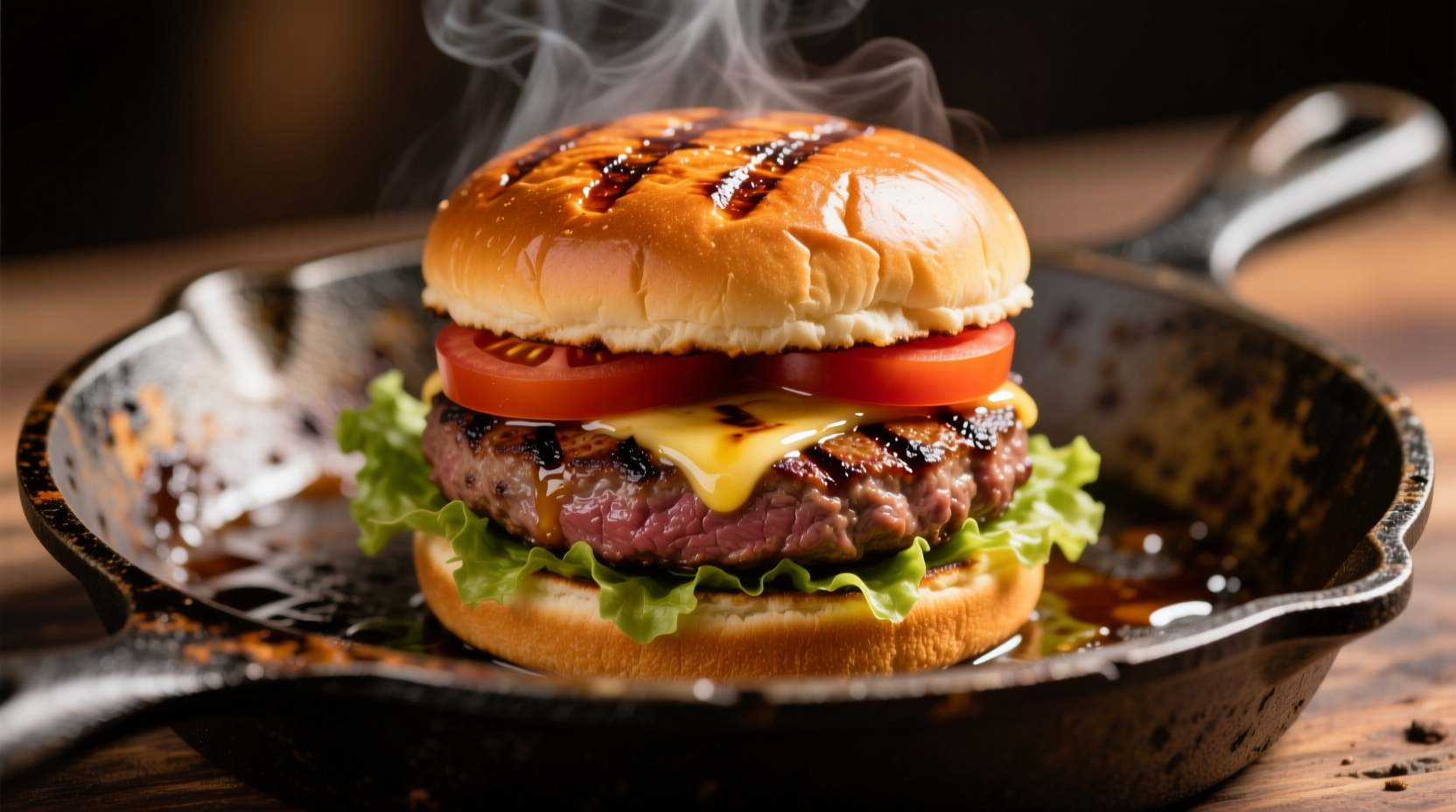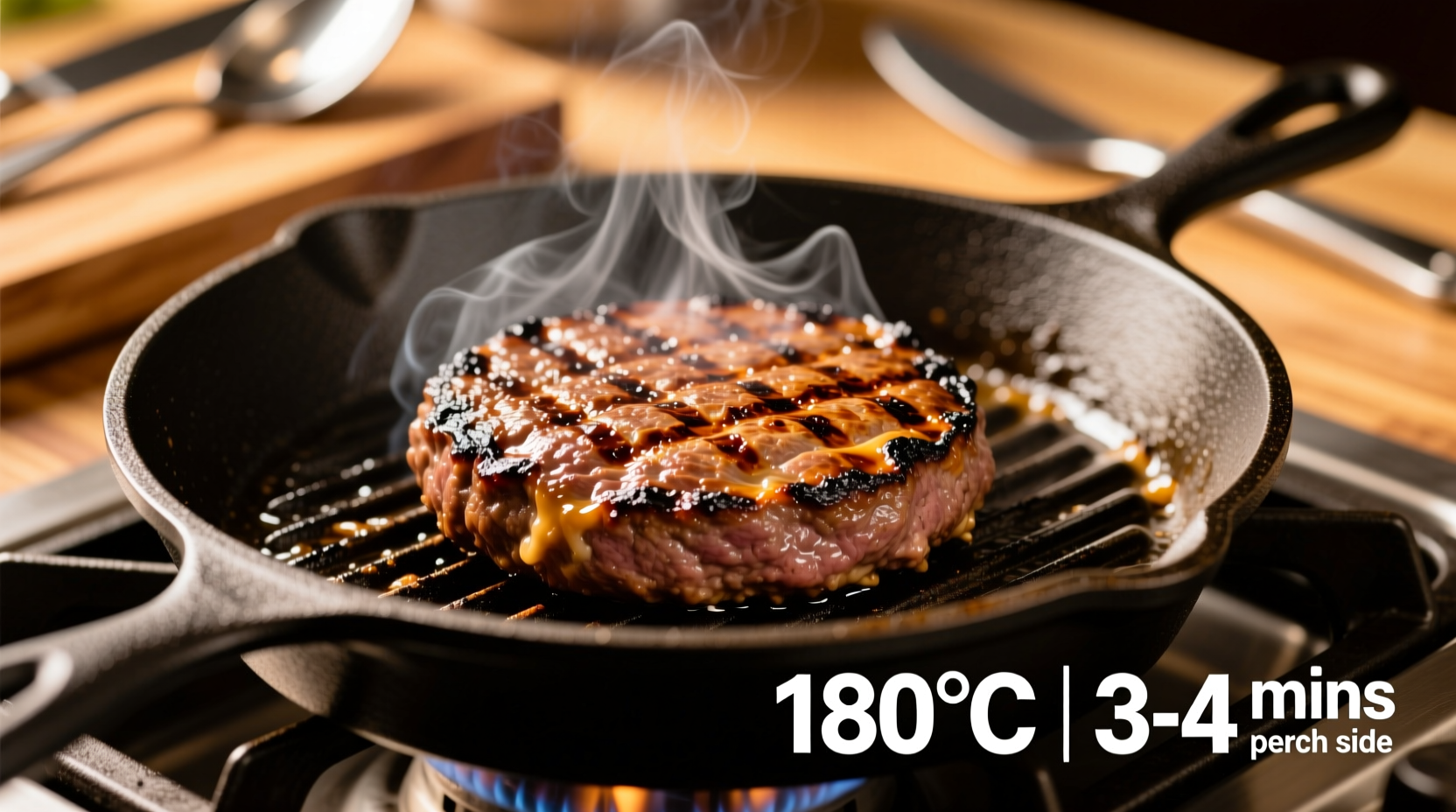Ever wonder why your homemade burgers never achieve that perfect restaurant-quality sear while staying juicy inside? The secret lies in understanding precisely what heat to cook burger patties at for optimal results. Getting the temperature right transforms your cooking experience from frustrating to flawless.
The Science Behind Burger Cooking Temperatures
When you place a burger on a cooking surface, several critical processes begin immediately. The Maillard reaction—that magical browning process that creates complex flavors—occurs most effectively between 300°F and 500°F (149°C-260°C). However, for burgers specifically, the sweet spot is narrower.
At temperatures below 350°F (177°C), you'll struggle to develop that desirable crust, resulting in gray, steamed meat. Above 425°F (218°C), the exterior burns before the interior reaches a safe temperature. The ideal range of 375°F-400°F balances these factors perfectly.
| Heat Level | Temperature Range | Result on Burger |
|---|---|---|
| Low | Below 325°F (163°C) | Gray exterior, uneven cooking, steamed texture |
| Medium-Low | 325°F-350°F (163°C-177°C) | Pale sear, longer cooking time, potential for dryness |
| Medium-High (Ideal) | 375°F-400°F (190°C-204°C) | Perfect sear, even cooking, maximum juiciness |
| High | 425°F-450°F (218°C-232°C) | Burnt exterior, raw interior, excessive flare-ups |
| Very High | Above 475°F (246°C) | Charred exterior, undercooked center, potential fire hazard |
How to Achieve Perfect Burger Heat on Stovetop
For gas stoves, set your burner to medium-high—about 60-70% of maximum. Electric stoves often require slightly less, around 50-60%, as they retain heat longer. Allow your pan to preheat for 3-5 minutes before adding burgers.
The water test provides a reliable visual indicator: flick a few drops of water onto the cooking surface. If they sizzle and evaporate within 1-2 seconds, you've reached the ideal temperature for cooking burgers on stove. If they dance and evaporate instantly, the pan is too hot; if they sit and bubble slowly, it needs more time.
Grill Temperature Guidelines for Perfect Burgers
When grilling burgers at what temperature, create a two-zone fire. The direct heat zone should register 375°F-400°F, while the indirect zone stays around 300°F. This setup allows you to move burgers to indirect heat if flare-ups occur.
To test grill temperature without a thermometer, hold your hand 5 inches above the cooking grate. You should be able to maintain this position for 3-4 seconds before the heat becomes unbearable—that's the sweet spot for what heat to cook burger patties.

Food Safety: Internal Temperature Matters
Regardless of your cooking surface, the USDA Food Safety and Inspection Service recommends cooking ground beef to a minimum internal temperature of 160°F (71°C) to eliminate harmful bacteria. Use an instant-read thermometer inserted horizontally through the side of the patty for accurate readings.
According to the USDA's Safe Minimum Internal Temperature Chart, ground beef must reach 160°F for safety. Unlike whole cuts of meat, ground beef requires this higher temperature because bacteria can be distributed throughout during the grinding process.
Troubleshooting Common Heat Issues
Dry burgers? Likely cooked at too low a temperature, causing the fat to render out slowly over extended cooking time. Higher heat creates a quick sear that locks in juices.
Burning on the outside but raw inside? Your heat is too high. Reduce the temperature slightly and consider using a two-stage cooking method: sear first, then finish at lower heat.
Sticking to the cooking surface? Your pan or grill isn't hot enough. Properly preheated surfaces create an instant sear that prevents sticking. Ensure your cooking surface is clean and properly oiled.
Pro Tips for Temperature Control Success
Bring burgers to room temperature for 20-30 minutes before cooking—this ensures more even cooking. Never press down on burgers with your spatula; this squeezes out precious juices. For thicker patties (over 3/4 inch), create a slight dimple in the center to prevent bulging during cooking.
When what heat to cook burger on cast iron, remember that cast iron retains heat exceptionally well. You may need to reduce the burner slightly after initial preheating. For stainless steel pans, maintain consistent medium-high heat throughout cooking.
Resting: The Final Temperature Step
After removing burgers from heat, let them rest for 3-5 minutes. During this time, the internal temperature will rise 3-5°F (the carryover cooking effect), and juices will redistribute throughout the patty. This crucial step makes the difference between a juicy burger and a dry one.











 浙公网安备
33010002000092号
浙公网安备
33010002000092号 浙B2-20120091-4
浙B2-20120091-4